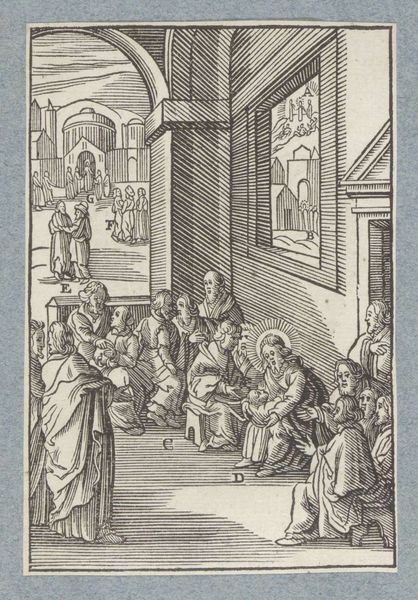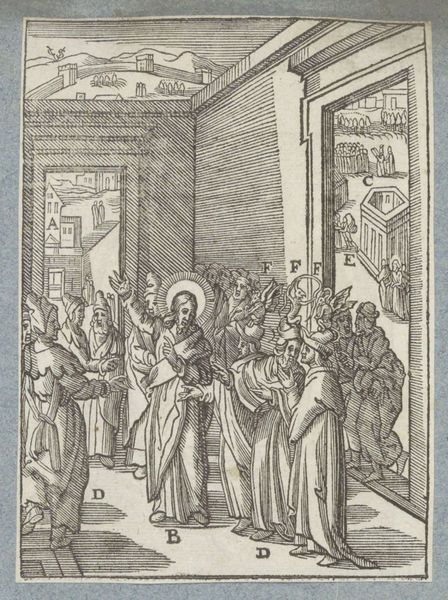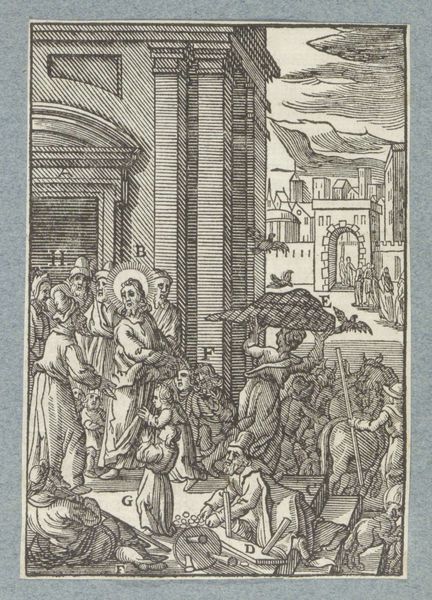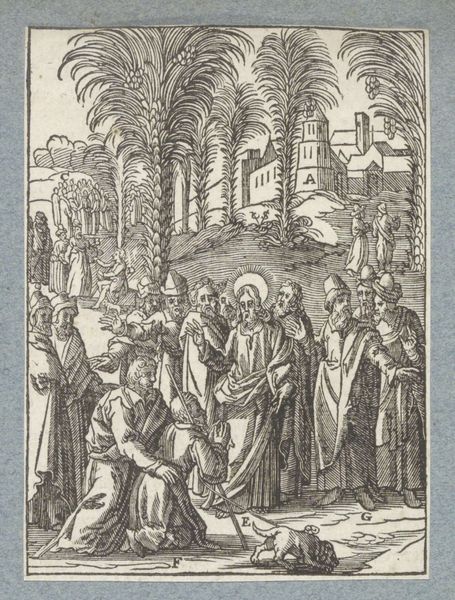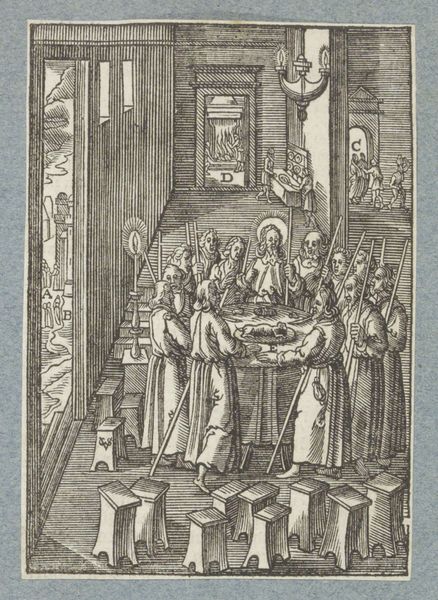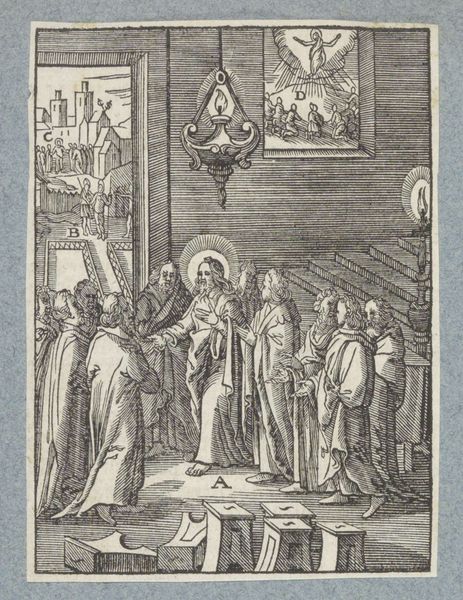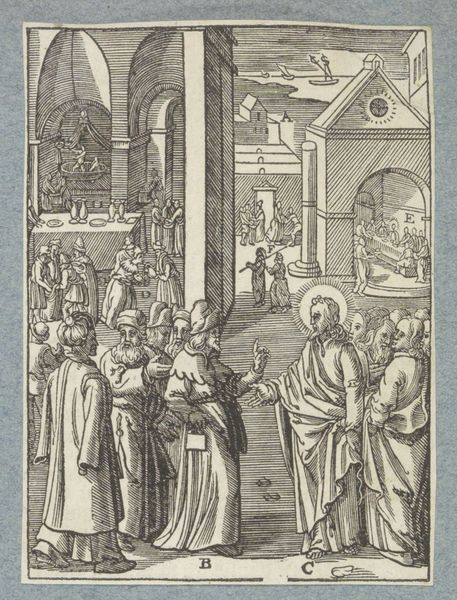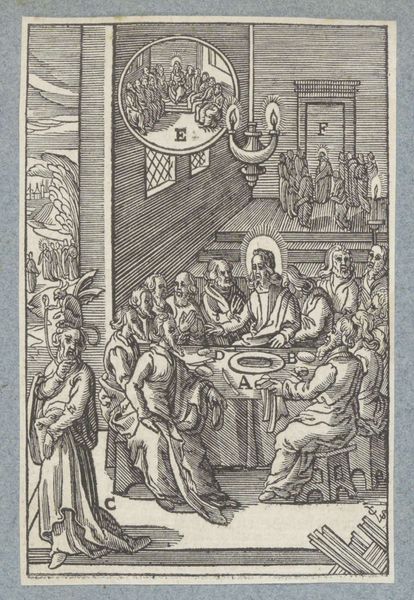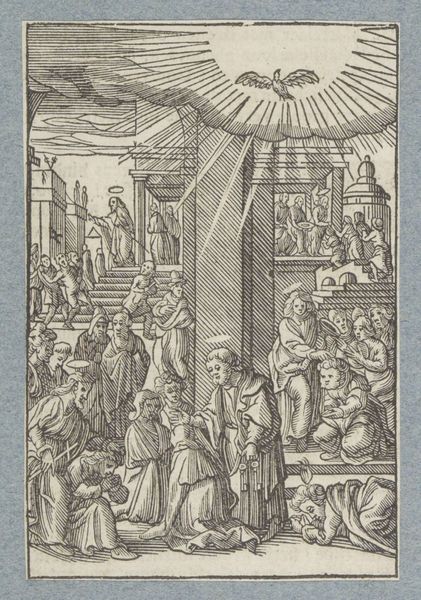
print, engraving
#
narrative-art
#
baroque
# print
#
figuration
#
chiaroscuro
#
line
#
history-painting
#
engraving
Dimensions: height 113 mm, width 76 mm
Copyright: Rijks Museum: Open Domain
Curator: Christoffel van Sichem II created this engraving, "Voetwassing van Petrus," or "The Washing of Peter’s Feet," in 1628. It’s currently held here at the Rijksmuseum. Editor: My eye is immediately drawn to the play of light. There’s an almost geometric quality to the arrangement of lines that suggests a deep study of perspective. Curator: Sichem’s piece is interesting when viewed through the lens of performative humility and power dynamics inherent within religious leadership during the Baroque era. Consider how ritualistic acts like foot-washing reinforced hierarchical structures, even as they seemingly advocated for egalitarianism. Editor: From a formal perspective, note how the strong diagonal lines leading from the upper left to the lower right visually connect the separate scenes depicted in the image, guiding the viewer's eye. This compositional choice integrates distinct narrative moments into a cohesive visual experience. Curator: And thinking intersectionally, we should ask: Who is being centered in this narrative and whose experiences are marginalized? The very act of depicting Peter's feet being washed places him in a vulnerable, yet honored, position, reinforcing societal norms around respect, masculinity, and submission. How do the experiences of those outside of this male circle get considered in the same story? Editor: I agree; there's an intriguing interplay between the graphic clarity and the rather elaborate subject matter. The visual clarity underscores the very human moment but keeps the mood very composed, which perhaps is heightened by its rather ordered linework. Curator: Looking at it now, the cross-hatching indeed flattens and almost neutralizes any emotional volatility. The piece becomes a study in symbolic representation more than a heartfelt portrayal of service and devotion. Editor: The longer I look, the more I feel the success is due to Sichem's command of line. This generates the mood, dictates the values, and defines space within this little world, even centuries later. Curator: Right, seeing through both of our lenses reveals an insightful and multidimensional view of how society understands care and respect, from interpersonal relationships all the way to greater socio-political expectations of historical figureheads.
Comments
No comments
Be the first to comment and join the conversation on the ultimate creative platform.


